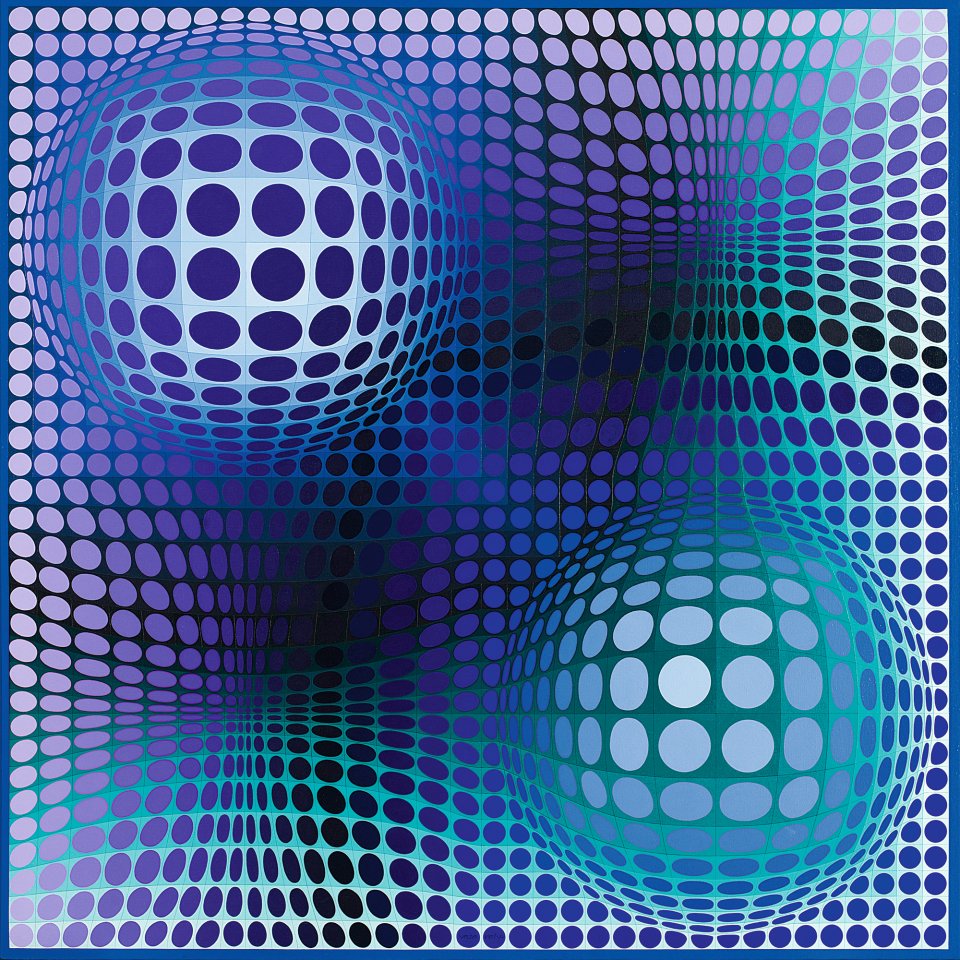Fény
In 1968 Vasarely began his ‘universal structures’ series, which reflects his profound interest in quantum physics, the theory of relativity and astrophysics. In works such as Fény – meaning light in Hungarian – executed in 1973, he attempted to evoke the boundless universe of the galaxies. Taking as a basis the repetition of a unit consisting of a circle enclosed in a square, he created a grid which, when deformed, generates a three-dimensional abstract landscape with elevations and depressions. ‘Carried by the waves, I flee forward, sometimes towards the atom, sometimes towards the galaxies, crossing attractive or repulsive fields’. For Vasarely this dual illusionistic effect of convexity and concavity held a cosmic symbolism that evoked the expansion of the universe and the formation of stars and galaxies.
When he painted Fény, Vasarely was at the peak of his career. His wish to take his artistic ideas to the public space began to materialise and his name became synonymous with Op Art (optical art) following the success of his participation in the exhibition The Responsive Eye at the Museum of Modern Art in New York in 1965.



